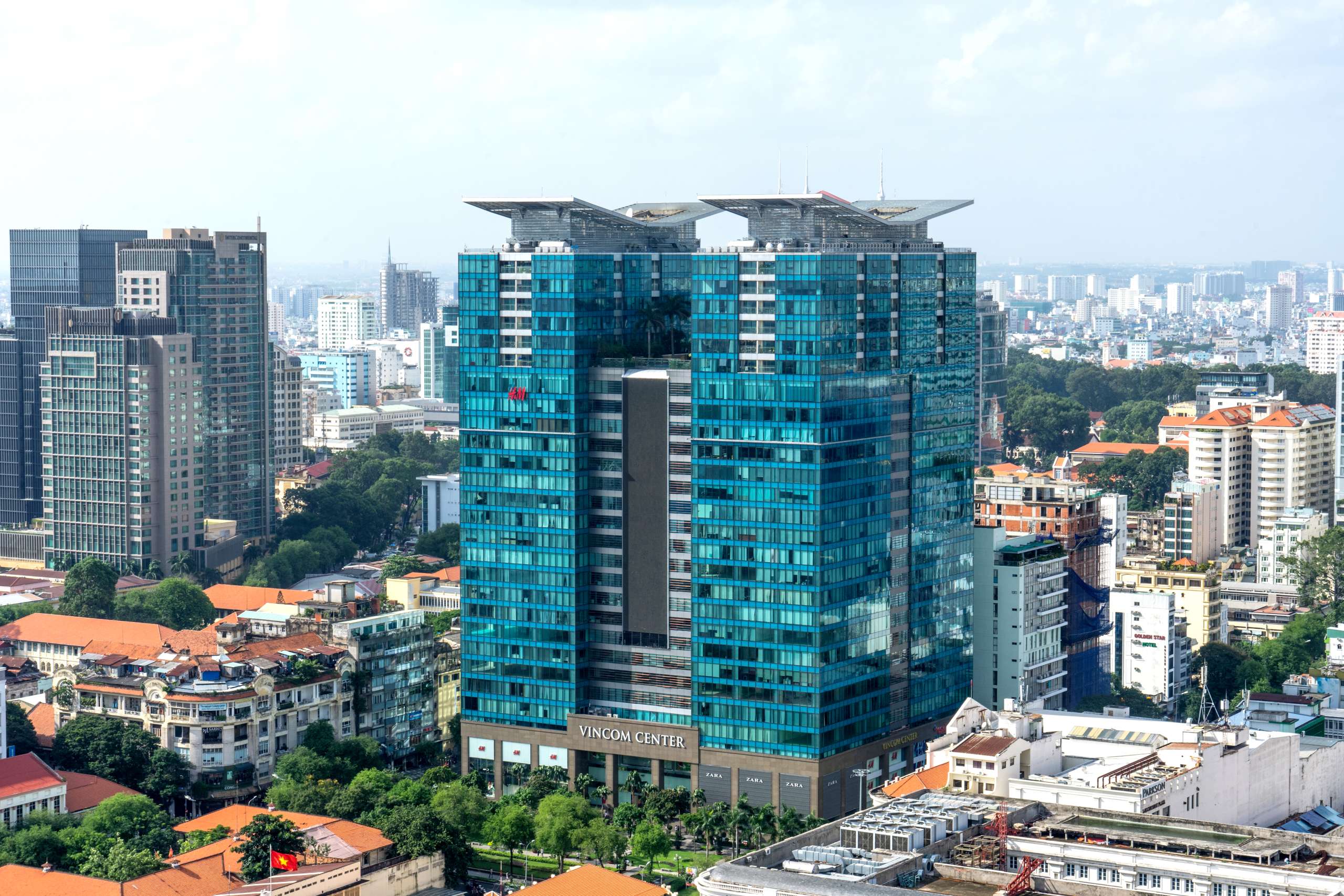Newsletter
Keep yourself update with our current news for Juwai IQI

HCMC Apartment Prices Soar, Outpacing Landed Homes as Foreign Investment Fuels Vietnam Property
written by DUSTIN TRUNG NGUYEN, Head of IQI VietnamVietnam’s real estate sector is increasingly attracting foreign investors through mergers and acquisitions (M&A), driven by economic recovery and rising demand. The first half of 2025 saw a number of notable foreign-led transactions. These include CapitaLand’s US$553 million acquisition of a project from Becamex IDC; the partnership of Sumitomo Forestry, Kumagai Gumi and NTT Urban Development with Kim Oanh Group to develop The One World project; and Nishi Nippon Railroad’s purchase of a 25% stake in Nam Long’s Paragon Dai Phuoc project. HCMC apartment prices are increasingly approaching, and in some cases surpassing, single-family homes. An 85-square-meter unit at The Metropole in the eastern ward of An Khanh, is being sold at VND130-180 million (US$4,925-6,820) per square meter. An 80-square-meter private house with one ground floor and two upper stories in nearby Thao Dien Ward only costs VND150 million per square meter. Other nearby apartments such as The Privé, Eaton Park and Lumière Midtown are selling at VND130–250 million, higher than the VND110–200 million range of landed houses within a two-kilometer radius. For more countries updateDownload Now!
1 October

Canada’s Housing Market 2025 Summary
written by YOUSAF IQBAL, Head of IQI CanadaCanada’s housing market remained steady yet subdued in August 2025. The national average home price edged up to C$672,800, but experts still anticipate a 2% annual decline. Affordability remains a major challenge, with recovery to pre-pandemic levels not expected for at least two years, even amid interest rate cuts. A growing housing supply is easing pressure on prices, encouraging cautious re-entry from first-time buyers. Meanwhile, rental growth has softened due to reduced immigration, contributing to a more balanced but affordability-constrained environment for both buyers and investors. Regionally, market dynamics vary. In the Greater Toronto Area (GTA), sales rose by 2.3% and listings increased 9.4%, while average prices dropped 5.2% to $1.02 million—creating a more competitive landscape. Metro Vancouver saw a 2.9% increase in sales and a 17.6% surge in listings, but benchmark prices fell 3.8% year-on-year to $1.15 million. Detached and townhouse segments saw improvement, while apartment demand lagged. In contrast, Quebec had its busiest August since 2020, with a 10% rise in transactions and strong price growth across all property types, reinforcing its status as a seller’s market. Source by FSMI For more countries updateDownload Now!
1 October

Perth, Brisbane Lead Housing Boom as National Home Value Index Rises 4.1% Annually
written by Lily Chong, Head of IQI AustraliaCotality’s national Home Value Index (HVI) rose 0.7% in August, marking the strongest monthly gain since May last year and lifting annual growth to 4.1%.The upswing has been building since the February rate cut, driven by improved borrowing capacity, rising buyer confidence, real wage growth, and limited advertised stock.“There’s a clear mismatch between supply and demand, which continues to push housing values higher,” said Tim Lawless, Cotality Australia’s research director.Key HighlightsStrong vendor position: Auction clearance rates hit 70% in late August, the highest since February last year.Tight supply: Advertised stock levels remain about 20% below average, giving sellers an advantage despite a slight seasonal increase in new spring listings.Sustainable growth expected: While prices are rising, affordability constraints, cautious lending, and slower population growth are likely to keep growth more measured compared to the rapid surges seen during the pandemic.Perth Market PerformancePerth continues to be one of the strongest-performing capital cities, with housing values rising 1.1% in August, outpacing the national average. Alongside Brisbane (+1.2%) and Adelaide (+0.9%), Perth remains a frontrunner in monthly gains.Low advertised stock, strong buyer demand, and attractive affordability compared to other capitals are contributing to Perth’s sustained growth momentum.Perth Rental MarketPerth’s median dwelling rent stayed stable at $680 per week in August, 4.6% higher than last year.Houses: Up 2.2% over the month to $700 per week (7.7% YoY increase).Units: Stable at $650 per week, up 4.6% YoY.While rents remain elevated, experts note this is a seasonal trend as rental demand typically tightens towards the end of the year. However, there’s no broad surge in prices, with many landlords keeping new lease and renewal increases modest.Source by Cotality & ReiwaFor more countries updateDownload Now!
1 October

Juwai IQI Newsletter – Real Estate Market – October 2025
The global real estate market saw mixed results in October, with some areas improving and others struggling.What else have you missed in September 2025For more info Download Now!
30 September

IQI Strengthens Its Global Footprint from Asia to Europe
IQI Philippines has launched IQI Partners, a new programme designed to bring independent local real estate agencies into IQI’s global network without sacrificing their autonomy. Partners will gain access to cutting-edge tech tools (like the Atlas super-app and AI-powered IQPilot), international marketing and buyer networks, and training & operational support. The inaugural member is Calidad Realty Services Inc., a luxury-market specialist agency. The move aims to give smaller agencies a way to scale, serve more clients (including international ones), and boost productivity—while still maintaining control over their brand and client relationships.IQI Partners: Empowering Local Agencies with Global Reach in the PhilippinesIQI expands its reach in the European market with the launch of IQI Germany, formed through a partnership with boutique luxury brand Dianium Residence. The move strengthens IQI’s mission to make cross-border property transactions easier and safer, connecting German buyers with prime opportunities in Asia and international investors with Germany’s thriving market. Germany is a major source of outbound investment, with German buyers accounting for large shares of foreign purchases in top European destinations like France, Italy, and Portugal. With home prices in Germany expected to rise by 3.5% this year and average rental yields around 3.83%, IQI Germany is positioned as a two-way bridge: offering German client’s overseas expertise and giving overseas investors trusted access to Germany. Led by Michael Lamm, IQI Germany aims to maintain a boutique, high-service approach while leveraging IQI’s global network.Juwai IQI October NewsletterDownload Now!
29 September

Gen Z and Millennials Are Redefining Malaysia’s Property Market
Written by Dave Platter, Global PR DirectorNew data from IQI, based on over 127,000 property transactions since 2018, reveals a striking generational divide in Malaysia’s housing preferences. Gen Z is overwhelmingly choosing condos or apartments, with more than 80% of their purchases in high-rise units. In contrast, Gen X and Millennials still show a strong preference for landed homes such as terraces and detached houses. The generational split suggests a broader shift in lifestyle priorities and urban living trends, with younger Malaysians leaning toward vertical living in city-centric environments.Juwai IQI Group CEO Kashif Ansari explains that housing choices closely follow age patterns. Younger buyers in their 20s gravitate toward units, while those in their 30s to 50s typically in the family-raising stage tend to prefer landed properties. Interestingly, older Malaysians in their 60s and above are once again opting for units, likely for reasons related to convenience, downsizing, or accessibility. This trend highlights a lifecycle-based approach to homeownership across generations.Despite Gen Z’s strong preference for units, landed homes continue to dominate Malaysia’s housing market overall. In 2024, 69% of the country’s 64.7 million homes were landed, and they accounted for 79% of total transactions. While high-rise living is on the rise, especially among younger generations, landed properties remain foundational to Malaysia’s housing landscape, illustrating the continued importance of offering both property types to meet evolving lifestyle needs.Juwai IQI October NewsletterDownload Now!
29 September

How the MRT 3 Circle Line Will Reshape Kuala Lumpur’s Property and Mobility
Written by Irhamy Ahmad, Founder and Managing Director of Irhamy Valuers InternationalMalaysia is rapidly reshaping its urban landscape with world-class infrastructure, and one of the most significant catalysts for future growth is the MRT 3 Circle Line. Designed to complete the Klang Valley rail loop, MRT 3 will not only redefine mobility but also unlock new opportunities in the property sector.The 51.6-kilometre line will loop around Kuala Lumpur and connect with the MRT, LRT, KTM, and Monorail networks through 10 interchange stations. It will feature 33 stations in total—including 7 underground (with 1 provisional) and 26 elevated (with 2 provisional). This extensive coverage is set to enhance accessibility across both mature and emerging neighbourhoods.Public feedback has been strongly supportive, with 93% in favour during the 2024 inspection. Communities and developers can expect growth corridors to emerge along the alignment, as enhanced connectivity typically drives higher land values, stronger housing demand, and new commercial potential.With final approval granted in July 2025, land acquisition is now underway. Construction is scheduled to begin in 2027, with completion targeted for 2032. Once operational, MRT 3 will ease congestion, shorten commutes, and transform Greater Kuala Lumpur’s property market by creating new growth corridors and investment hotspots.Juwai IQI October NewsletterDownload Now!
29 September

What Budget 2026 Means for Malaysia’s Property Market
Written by Muhazrol Muhamad, GVP, Head of Bumiputra SegmentBudget 2026: What Homebuyers, Developers and Investors Should ExpectMalaysia’s upcoming Budget 2026, set to be announced on 10 October 2025, is expected to significantly influence the property market. A key concern for homebuyers is whether the stamp duty exemption on properties up to RM500,000 will be extended beyond 31 December 2025. If extended, it would continue supporting affordability and encourage first-time buyers, especially those targeting the RM300k–RM500k segment. However, if it expires, a surge in property transactions may occur before year-end, followed by a market slowdown. With current mortgage rates at a manageable 2.75%, this presents a short-term opportunity for buyers despite broader affordability challenges.For developers, Budget 2026 may offer targeted incentives and stronger backing for financing schemes like SJKP, which supports up to 120% financing for qualified buyers, especially gig workers and low-income households. These measures could help reduce unsold inventory and support market stability amid economic uncertainty. Investors, meanwhile, will closely watch changes to Real Property Gains Tax (RPGT), especially the stricter self-assessment and documentation process. Budget 2026 is anticipated to serve as a turning point, prompting all stakeholders, buyers, developers, and investors—to reassess their strategies in what is likely to be a redefined and opportunity-laden market in 2026 and beyond.Juwai IQI October NewsletterDownload Now!
29 September

































